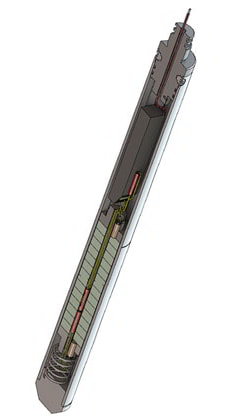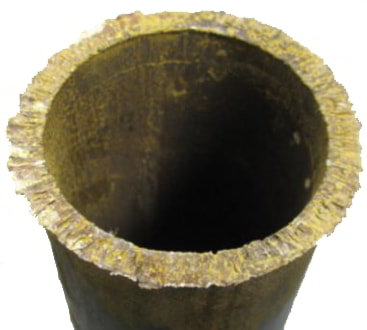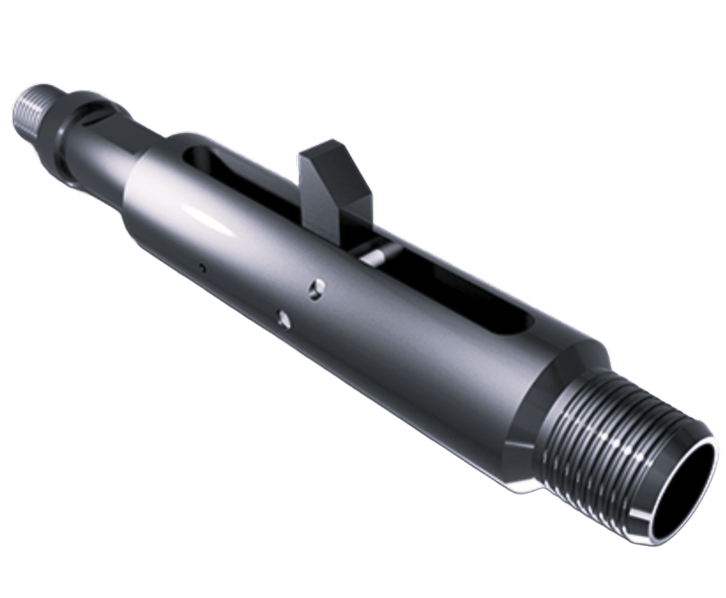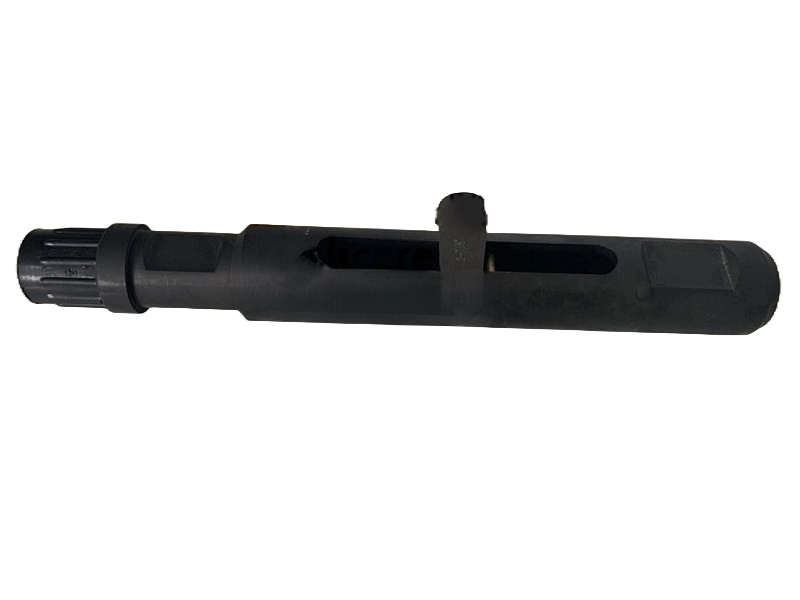Don't have an account? Join for free
For advertising on
Interest to become a seller? Get info
Cart
Completions
Fishing Tools

Introducing ID Oiltools' Drill Collar Severing Tools - the reliable and safe solution for Pipe Recovery Operations. Our Drill Collar Severing Tools utilize Explosive Bridge-Wires to simultaneously detonate columns, creating a shock wave collision that severs the tubular with precision. Our tool provides a quick and effective solution to sever heavyweight drill pipe and drill collars, and is designed to conform to API RP-67 for maximum safety. With air shippable detonators and hardware shipped separately, our Drill Collar Severing Tools are the ultimate in convenience and efficiency. Our patented Explosive Bridge-Wire Detonators increase the precision of the colliding shock-waves for maximum performance, making it the tool of choice for stuck pipe or plug and abandonment (P & A) operations. Choose the tool with the largest possible diameter capable of running in the stuck pipe for maximum results. Tension should be applied to the tubing prior to detonation of the Severing Tool to assist in the removal of stuck tubulars. Trust ID Oiltools to provide the safe, efficient, and reliable solution for all your Pipe Recovery Operations. View Details

Introducing Tubing Cutter / Drill Pipe Cutters from ID Oiltools - the perfect solution to quickly and effectively sever tubing during the removal of stuck pipe. Our Tubing Cutters are designed to handle the toughest situations when tubing becomes stuck in the well. To achieve maximum performance, we recommend choosing the cutter with the largest possible diameter that can run in the well. Our Tubing Cutter / Drill Pipe Cutters are air shippable at Class 1.4D and conform to API RP-67, ensuring that you receive a reliable and safe product. To maximize the effectiveness of the tool, our cutters should be centralized and run in recommended applications. Don't let stuck tubing slow down your operations - trust ID Oiltools Tubing Cutter / Drill Pipe Cutters to provide a quick and efficient solution. Contact us today to learn more about how we can help you overcome the toughest challenges in your well operations. View Details

The 2” Tubing End Locator is a mechanical downhole tool used to determine the physical end of production tubing during well intervention or maintenance activities. It is a critical component in operations where it is necessary to confirm tubing length or avoid tool deployment beyond the tubing’s bottom, such as during setting packers, logging, or fishing operations.
In a typical well setup, production tubing does not always terminate at a predictable or recorded depth. The tubing end locator provides a reliable way to identify the true end of the tubing string by using a spring-loaded finger mechanism that reacts upon reaching the tubing’s bottom. This reaction is detectable at the surface, providing the operator with a clear and immediate indication without relying solely on depth readings or assumptions.
This specific model is intended for tubing sizes ranging from 2" to 2-1/2" outer diameter. It is designed with a maximum tool O.D. of 1.750", which ensures clearance inside the tubing, and includes a 1.375" fishing neck, a standardized feature that allows the tool to be retrieved if necessary using conventional pulling tools.
Threading is provided on both ends for integration into tool strings: a 15/16 - 10 UN pin connection on top and a 1 - 11.1/2 NPT box connection at the bottom. This allows the locator to be run inline with other mechanical or wireline-conveyed tools. These standard thread forms ensure compatibility with widely used downhole equipment and deployment systems.
Constructed from high-strength alloy steel, the tool is designed to withstand the mechanical stress, temperature variations, and chemical exposure typical in oil and gas well environments. While not a pressure-control device, its materials and design are selected to perform reliably under downhole pressure conditions encountered during standard intervention work.
The 2” Tubing End Locator provides a mechanical means of depth verification that does not rely on electronics, sensors, or depth counters. It is a simple, durable, and effective tool for reducing uncertainty and improving operational safety in the wellbore.
View Details
In oil and gas well operations, the 2 ½” Tubing End Locator plays a critical role in confirming the exact depth at which production tubing terminates within the wellbore. Accurately identifying the tubing endpoint is essential during various well intervention activities, including maintenance, workovers, and the installation or retrieval of downhole tools and equipment.
During operations such as setting packers, deploying plugs, running logging tools, or performing fishing jobs to recover stuck equipment, precise knowledge of tubing length ensures that tools are positioned correctly. This prevents accidental over-pumping or tool deployment beyond the tubing into the open hole section of the well, where damage to equipment or tool loss can occur.
The 2 ½” Tubing End Locator is designed specifically to fit tubing with an outer diameter of approximately 2 ½ inches. It features a compact maximum outside diameter of around 1.750 inches, allowing it to pass easily within the tubing without causing obstruction. The tool employs a spring-loaded finger mechanism that activates mechanically upon reaching the tubing bottom. This signal does not rely on electronic sensors or depth measurement devices, making the tool highly reliable even in harsh downhole environments where electronics may be compromised by pressure, temperature, or fluid conditions.
Standardized threaded connections on the tool—typically a 15/16 - 10 UN pin on the top and a 1 - 11 1/2 NPT box on the bottom—enable it to be seamlessly integrated into a wide range of intervention toolstrings. These common connection types ensure compatibility with existing downhole equipment and facilitate quick assembly and deployment.
Manufactured from high-strength alloy steel or similar materials, the tubing end locator is built to withstand typical downhole conditions, including high pressure, elevated temperatures, and corrosive fluids commonly found in oil and gas wells. Its purely mechanical design minimizes maintenance requirements and reduces the risk of failure compared to electronic alternatives.
This tool is particularly valuable in wells where tubing length may have changed due to wear, repairs, or previous interventions, offering an essential measure of control and confidence in complex well environments.
View Details
The 3” Tubing End Locator is a mechanical downhole tool used to identify the precise end of a 3-inch production tubing string during well intervention operations. It provides a clear physical indication when the tool reaches the bottom of the tubing, helping to ensure accurate placement of equipment inside the well.
Designed specifically for tubing with a 3-inch outer diameter, the tool features a maximum outside diameter of 2.500 inches. This sizing ensures smooth movement within the tubing while maintaining close contact, allowing the tool to operate effectively without the risk of sticking or misalignment. At the core of the design is a spring-loaded finger mechanism that extends outward when the tubing end is reached. This mechanical movement is transmitted to the surface as a tactile response, signaling that the tubing bottom has been contacted.
The tool includes standard threaded connections—such as a 15/16 - 10 UN pin on the top and a 1 - 11 ½ NPT box on the bottom—which makes it compatible with a variety of toolstring configurations. It can be easily incorporated into slickline, wireline, or coiled tubing assemblies without the need for special adapters.
Constructed from durable, corrosion-resistant materials, the tubing end locator is built to perform reliably in downhole environments that involve high pressure, elevated temperature, and exposure to fluids. Its fully mechanical operation ensures a high level of dependability and minimizes the need for maintenance, especially in conditions where electronic systems may not be suitable.
The 3” Tubing End Locator is a practical solution for confirming tubing depth when preparing the well for further intervention.
View Details
The 4” Tubing End Locator is designed specifically for use with larger production tubing strings common in wells that require greater flow capacity or enhanced mechanical strength. This size is typically found in wells with higher production rates or more demanding operational requirements, where accurate depth confirmation becomes even more critical.
This model is specifically sized for 4-inch outer diameter tubing, featuring a maximum outside diameter that fits comfortably within the tubing’s internal dimensions. This sizing ensures that the locator can move smoothly without obstruction while maintaining effective contact to detect the tubing end. The core mechanism involves a spring-loaded finger that extends outward upon contacting the tubing bottom. This movement translates into a tactile signal felt at the surface, eliminating the need for complex electronic systems and reducing the risk of failure in harsh downhole environments.
Equipped with standardized threaded connections—commonly a 1-9/16 - 10 UN pin on the top and a 1 - 11 ½ NPT box on the bottom—the tool integrates easily into typical slickline, wireline, or coiled tubing toolstrings. The fully mechanical design enhances reliability, making it well-suited for use in conditions of high pressure, elevated temperatures, and corrosive fluids often found in oil and gas wells.
The 4” Tubing End Locator is especially valuable in wells with larger tubing sizes where accurate depth confirmation is critical to avoid operational errors. By providing a straightforward and dependable method to locate the tubing end, it supports safe and efficient well intervention, helping to reduce downtime and operational risks.
View Details